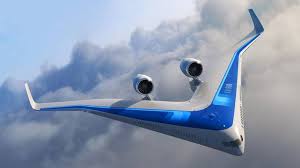
Breaking News
 The Days of Democracy Are Over
The Days of Democracy Are Over
 Elon Musk Described an AI Device to Replace Phones in 5 Years
Elon Musk Described an AI Device to Replace Phones in 5 Years
 Deposit Insurance For Billionaires?
Deposit Insurance For Billionaires?
 Rep. Troy Balderson Is Right: Coal And Gas Drive Affordable, Reliable, And Clean Energy
Rep. Troy Balderson Is Right: Coal And Gas Drive Affordable, Reliable, And Clean Energy
Top Tech News
 Graphene Dream Becomes a Reality as Miracle Material Enters Production for Better Chips, Batteries
Graphene Dream Becomes a Reality as Miracle Material Enters Production for Better Chips, Batteries
 Virtual Fencing May Allow Thousands More Cattle to Be Ranched on Land Rather Than in Barns
Virtual Fencing May Allow Thousands More Cattle to Be Ranched on Land Rather Than in Barns
 Prominent Personalities Sign Letter Seeking Ban On 'Development Of Superintelligence'
Prominent Personalities Sign Letter Seeking Ban On 'Development Of Superintelligence'
 Why 'Mirror Life' Is Causing Some Genetic Scientists To Freak Out
Why 'Mirror Life' Is Causing Some Genetic Scientists To Freak Out
 Retina e-paper promises screens 'visually indistinguishable from reality'
Retina e-paper promises screens 'visually indistinguishable from reality'
 Scientists baffled as interstellar visitor appears to reverse thrust before vanishing behind the sun
Scientists baffled as interstellar visitor appears to reverse thrust before vanishing behind the sun
 Future of Satellite of Direct to Cellphone
Future of Satellite of Direct to Cellphone
 Amazon goes nuclear with new modular reactor plant
Amazon goes nuclear with new modular reactor plant
 China Is Making 800-Mile EV Batteries. Here's Why America Can't Have Them
China Is Making 800-Mile EV Batteries. Here's Why America Can't Have Them
Flying V long-distance plane makes its first flight as a scale model

Last year we caught wind of an interesting aviation concept cooked up by engineers at TU Delft, which consisted of a novel V-shaped design that promises significant efficiency gains over conventional aircraft. The project has now progressed from slick renders of a futuristic aircraft to a scale model capable of flight, which was recently shown in action for the very first time.
In its fully realized form, the Flying V aircraft would feature a cabin, cargo hold and fuel tanks integrated into its V-shaped wing structure, which would have a wingspan equal to that of an Airbus A350. This would enable the Flying V to take off and land using existing airport infrastructure, with enough space on board for the same amount of cargo and human passengers, with 314 seats in the standard configuration.
Where the Flying V would offer some performance benefits, however, is through improved aerodynamics due to its overall smaller airframe. Less mass means less resistance, which means less fuel is needed to carry the Flying V to its destination. According to the team, the reduced weight and unique shape of the Flying V could see it use 20 percent less fuel than an Airbus A350-900, the most advanced commercial aircraft in action today.

 China Innovates: Transforming Sand into Paper
China Innovates: Transforming Sand into Paper

